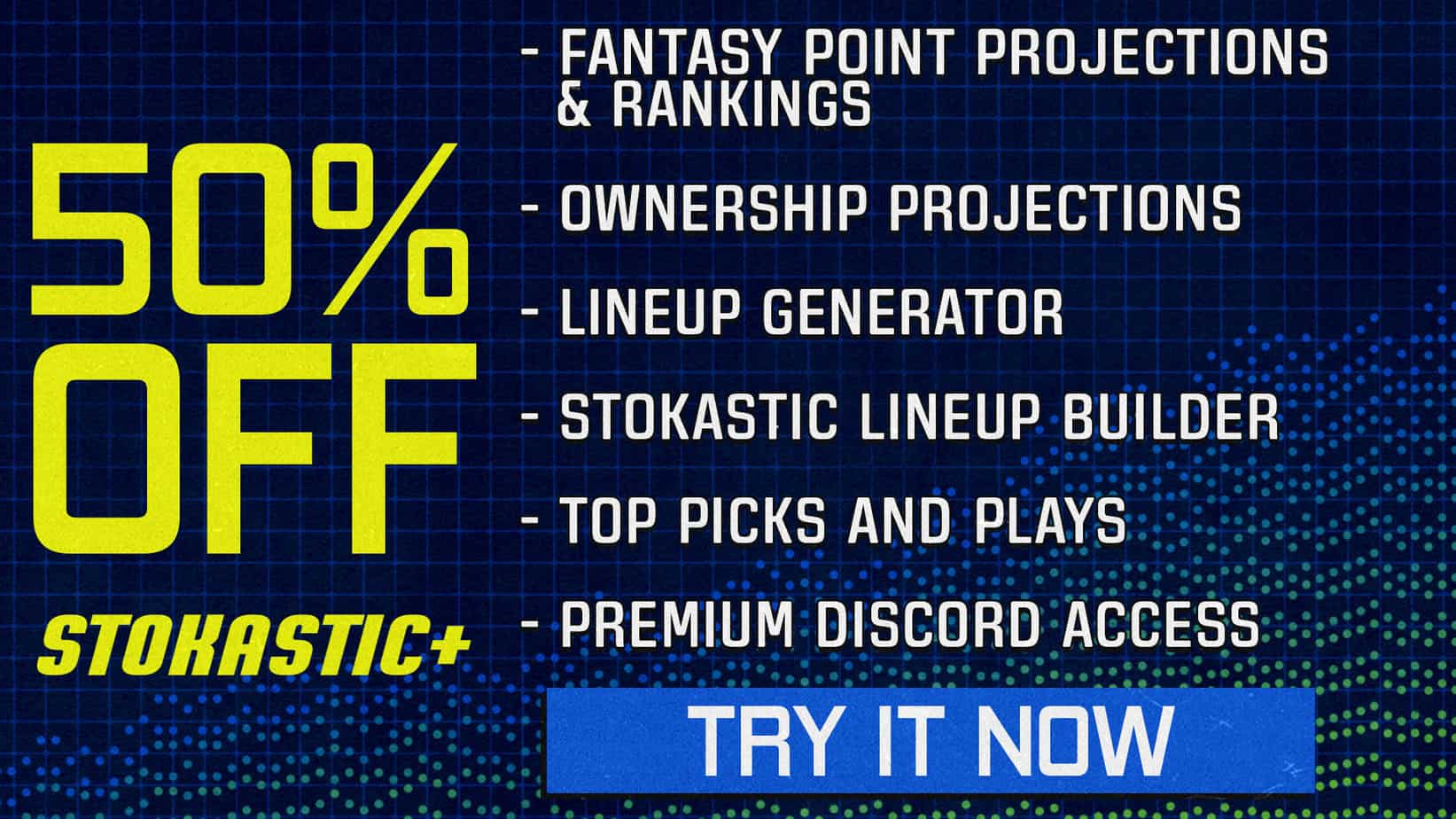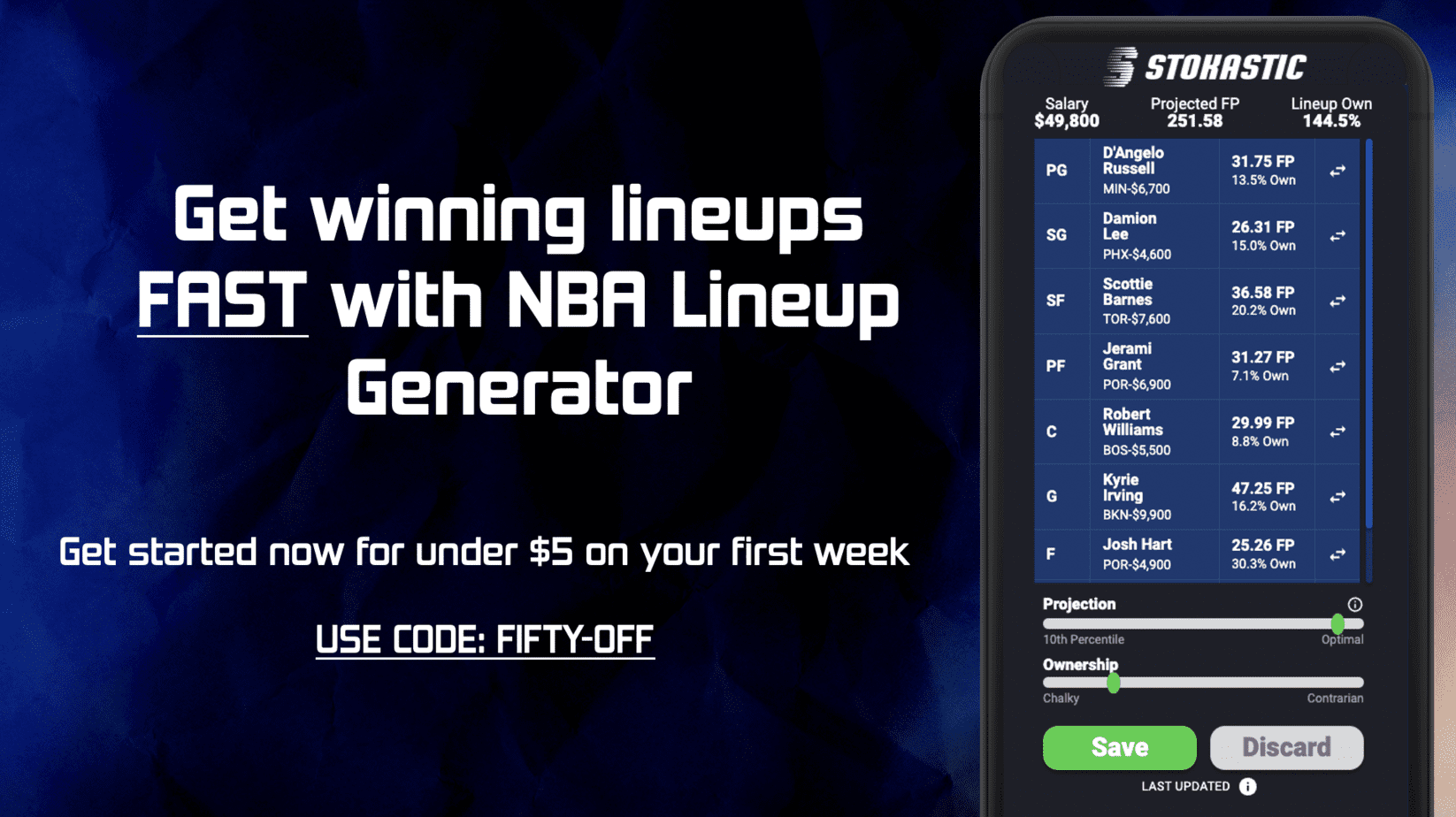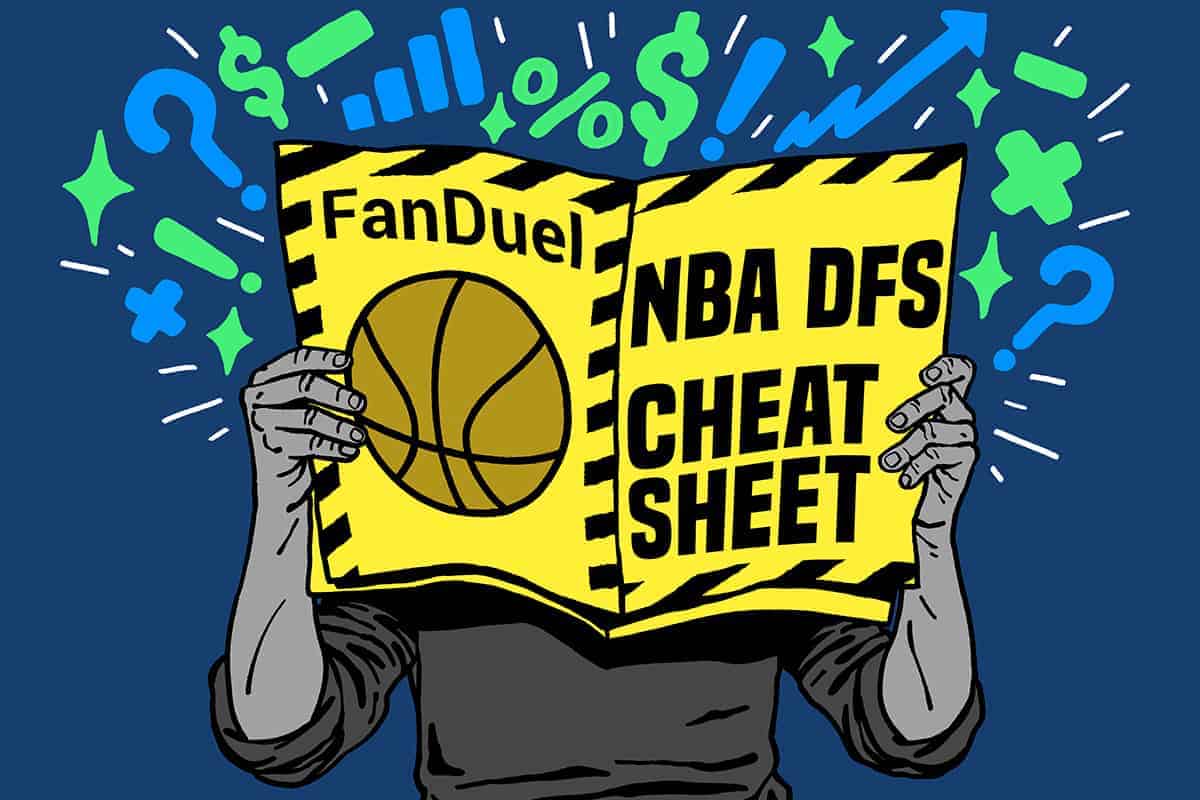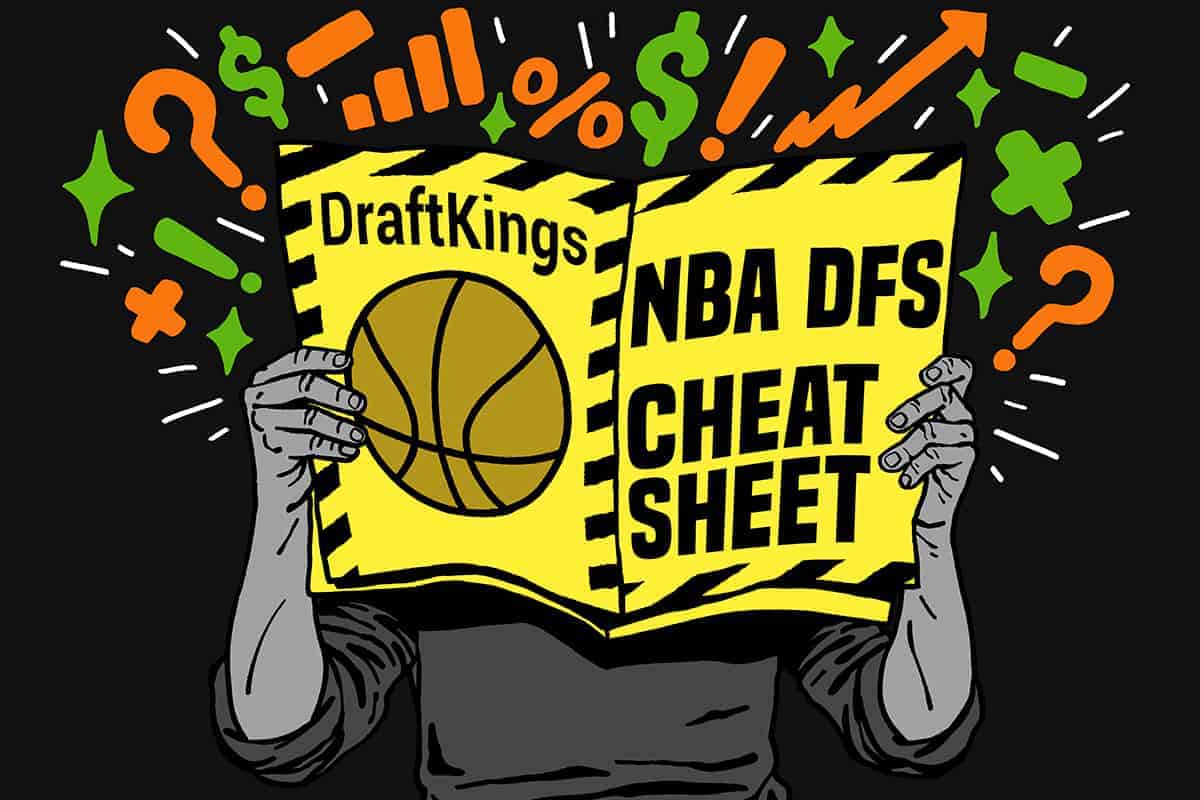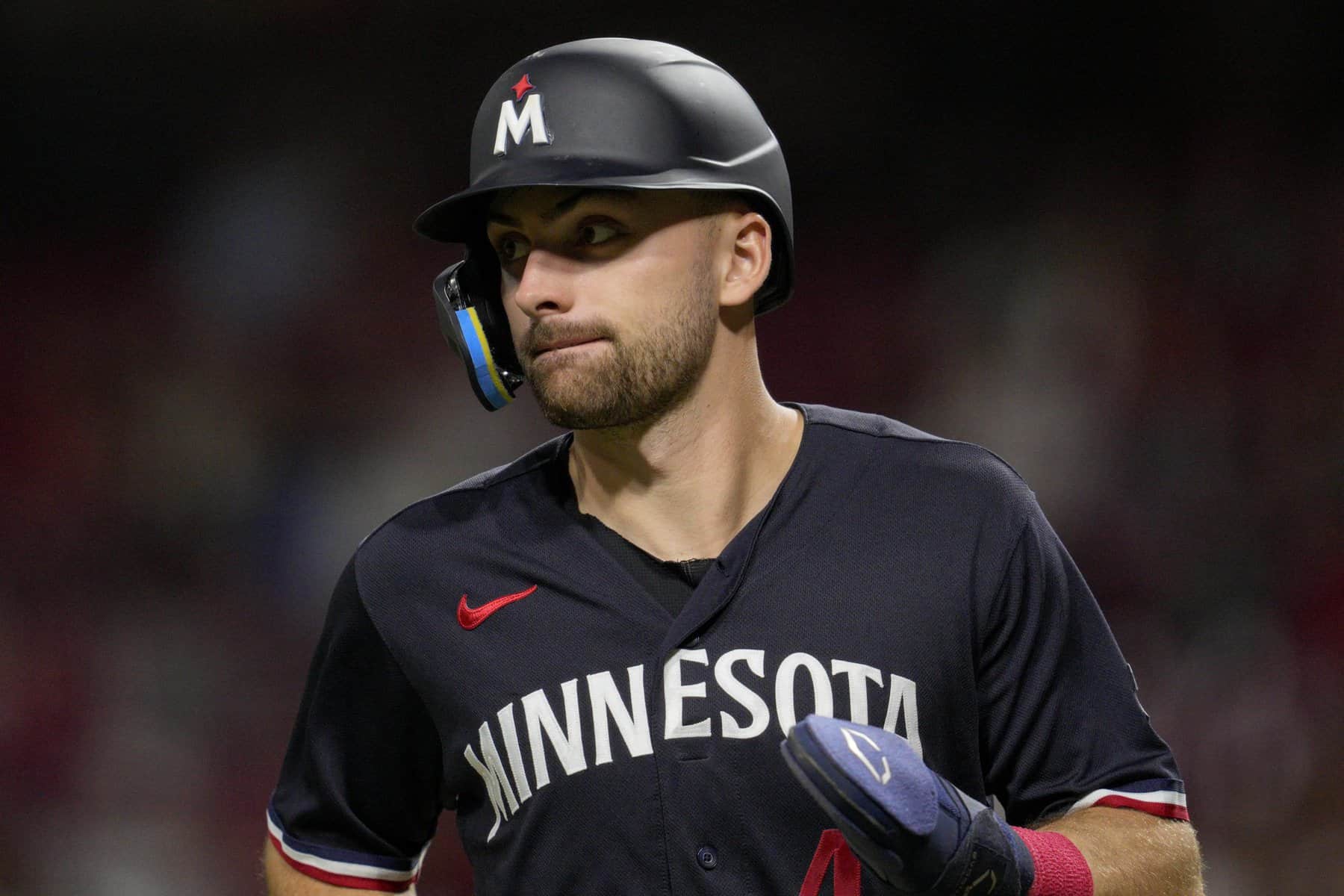In the early days of Daily Fantasy Sports you could win without projections. The game was new, and just being aware of who was in a team’s starting lineup or going to play minutes or snaps, was enough to get a huge edge on the field. Things have changed. DFS players developed sophisticated fantasy point projection system like Stokastic’s NFL, MLB and NBA projections that rigorously tested past results to predict future outcomes. That’s how DFS pros like our own Alex “Awesemo” Baker made their name.
Ironically, the introduction of DFS projections to the game made it harder to win over the long-run. Players quickly started buying projections models if they couldn’t develop them on their own. Even DFS players with the skills to create fantasy point projections found it was more cost and time effective to purchase them and apply their skills to other facets of the game. DFS became an “arms race” for who had the sharpest projections.
Flip forward to 2023 and there are now tons of DFS projections on the market. Some are good, and some are awful. Make no mistake, we’re partial to our own projections and think they’re the best, but we can certainly admit to having some tough competition. The most important thing for players to do is to understand how DFS projections are made so that they can best decide how, and how much to invest in this crucial resource for contemporary DFS in 2023.
The decision to purchase (or create your own) DFS projections is only the beginning. Players also have to learn how to apply them, when, and if, to deviate from the projections and all the ways that they can add value to these models. Many DFS players still don’t understand how projections are made, let alone how to use them effectively. That includes secondary tools like Stokastic’s Boom/Bust percentages for NBA and Top Stacks for NFL and MLB.
Projections of Two Kinds: Fantasy Points and Ownership
Before pouring over the details of a projection model, it’s important to define two terms: fantasy point projections and ownership projections. The former is the average number of fantasy points a player will score. DFS isn’t just about projecting how many points a player will score, but also predicting how much of the field is going to roster that player. The latter is called ownership. A quality projection source might predict a higher fantasy point ceiling on a player than the rate at which that player is being “owned,” which could make him a great play on that DFS slate.
While it might seem like ownership projections are completely different from fantasy point projections, the two are created in tandem. DFS has evolved since the pre-projection days and the field is now very sharp. Projection models know that, so ownership projections begin by assuming that the field is also using good projections. The most basic ownership projections are derived by considering the optimal rates that players will be rostered in DFS based on their point projection.
For example, if Stokastic’s average fantasy point projection for Lebron James is 40.23, the quickest way to distill his ownership would be to run the top 1000 lineups for the slate and to see at what percentage James appeared in those. That rate provides a baseline for his ownership, since most of the time the field is playing optimally. You can try this for yourself by using an optimizer like Fantasy Cruncher and running 1000+ lineups with no randomness.
That may give a baseline ownership projection using the fantasy point projections, but if it were so easy there wouldn’t be any need for ownership percentages in the first place. Stokastic’s DFS projections go beyond predicting player ownership at the optimal rate. The model uses several other variables as inputs to derive ownership percentage. After all, the field is sharp, but not perfect. If the DFS field was fully rational, every player would be owned at the percentage they should be. It would be pretty hard to beat anyone. Ownership projections consider a range of variables, including recency bias, player history, and the projections of competitors in the industry.
Sharp ownership projections allows you to exploit the field. Knowing that Lebron James will be rostered at a higher clip than he shows up in winning lineups is a powerful tool when building your own lineup set. You may want to pivot off Lebron to a different star, or to a roster construction that doesn’t include stars at all.
How much or how little you want to roster Lebron in that scenario is a question of risk tolerance that goes beyond the issue of exploiting ownership. Same with the skills for good roster construction. Further, ownership projections are based off the main GPPs on DraftKings and FanDuel, but how you apply exploitative strategies, roster construction and optimal (vs. winning) percentages should differ depending on what contest you’re trying to win.
The first step is using fantasy projections and ownership projections as a guide to understanding the best plays on a DFS slate. However, there’s a lot more nuance after that initial step. Average fantasy point projections are great, but beating thousands of other DFS players means getting more than an average performance. Secondary tools like Stokastic’s Boom/Bust percentage add value by showing how often a player outperforms their projection, and by how many standard deviations.
Thinking through a player’s range of outcomes, or “boom/bust” percentage in Stokastic’s terms is critical. As is weighing those outlier performances against a player’s ownership projection. The tools will get you started in doing so, but you’ll also have to understand how these are built and applied differently to every sport. Basketball, baseball, football and everything in between are unique animals for understanding how DFS projections are made.
Understanding Each Sport: NBA Projections vs. MLB vs. NFL, and Beyond…
Fantasy baseball has been around for decades, if not longer. There’s the infamous story about the advent of Rotisserie League Baseball, chronicled in book form in 1984; and the Baseball Hall of Fame in Cooperstown has dug-up baseball simulation parlor games dating back prior to the 19th century.
The devotion to baseball prediction games is in large-part cultural. Baseball is, or at least was the National Pastime in the United States. It’s popularity surely inspired more people to dig into the weeds of all the statistics involved. But the application of statistics to baseball isn’t just cultural. The sport lends itself well to modeling because it entails “discrete” events.
In other words, there’s a hit, then maybe a steal, or a walk, a strikeout, a put-out that moves the runner, and so on. Each event happens in a sequence, without the clock churning. The probability of one outcome happening after another can be estimated prior to the event, assigned a percentage likelihood, and the whole game can be modeled.
The early days of fantasy point projections never went that far. Providers could predict the fantasy points for a given player in a given game without relying on models that built the projection from the ground up. Times have changed, and simulation based approaches frequently used, including in Stokastic’s fantasy point projections. Although straightforward “event-based” analysis of a baseball game is much different in the NBA, and even the NFL.
Modeling basketball has to account for the fact that every possession is different. The clock moves as events happen. And unlike a baseball game where an individual player’s probabilities are relatively static given the state of the game, the NBA changes dramatically depending on who is on the court and the propensity of those players to perform certain tasks. When Lebron is on the court with Anthony Davis, his rebounding and scoring rates might drop, and perhaps his assist rate increases.
These nuances of fantasy point projections are granular, but the more you understand them the greater your opportunity to add value to projections. Has a player’s minutes or rotation changed? Perhaps the Lakers’ coach has decided to shift the team’s rotation and not play his stars together. Identifying how that impacts a game’s outcome better than the projections, or before they catch up, allows for adjustments to the projections that the field won’t have. Many of these variables can also be integrated within the model, especially if it stays as up to date as possible with changes in a real life sport.
There are opportunities like this on every NBA, MLB and NFL slate. Maybe a pitcher’s velocity has increased after working with a new pitching coach and his recent performance is more than just luck. Perhaps an NFL rookie is playing well in practice and earning extra snaps that the field isn’t aware of. Adjusting projections can be tricky because it moves from the world of rigorously tested and “objective” models to subjective nuance and speculation. But if done right, you can add value to fantasy point projections and grab and edge. How much edge is another question.
Are the Small Edges Worth It?
Nobody would dispute that understanding how DFS projections are made can help players add value that increases their ROI. However, doing so can be both time consuming and risky. Projection models are strong, and have been getting better over a period that’s pushing ten years since DFS took off. Many people believe that despite understanding what goes into DFS projections and how they can add to them, the small edge they would gain simply isn’t worth it.
Many go further, making a similar argument about projections themselves: If they’re all great, why bother figuring out which source is the best? They would say that Stokastic has amazing projections, and the industry as a whole is sharp, so the goal should be to understand ranges of outcomes, exposures, risk management and related DFS concepts.
Both arguments– adjusting projections for outside variables and the relative parity in models– are fair. People don’t have to add to already great systems like Stokastic’s DFS projections. Doing so could mistakenly integrate inaccurate or biased information; and it could take up valuable time.
Unfortunately, DFS has evolved and the field is stronger than ever. The same folks arguing that small edges aren’t worth the investment are also acknowledging how difficult it is to beat the field these days. It’s a far attitude, but inconsistent with the difficulty of DFS. Likewise, it fails to acknowledge important scenarios by pointing out the small difference that average projections might make in major sports and major slates, while diminishing their impact on small slates. If your projections are off for an NFL or NBA showdown, it can dramatically alter your lineup building process, even if you’re accounting for ranges of outcome, correlations and ownership.
Big or small, projections edges matter. When fantasy and ownership projections were first introduced, the edges in DFS were enormous and the gap between those that had quality projections and those that did not was wide. The ROI for strong players was huge, and although there is plenty of edge to be had above the rake on DraftKings and FanDuel, that percentage has tightened. Good players can’t afford to leave anything on the table, and players who want to grow their bankroll to reach the top of the DFS ecosystem need to capture every edge out there. That begins with having the best DFS projections, understanding how they’re made and how to use them effectively.
